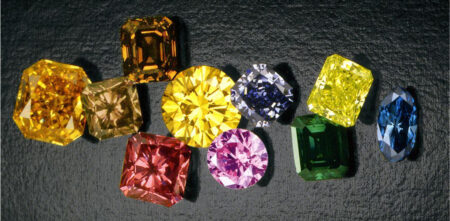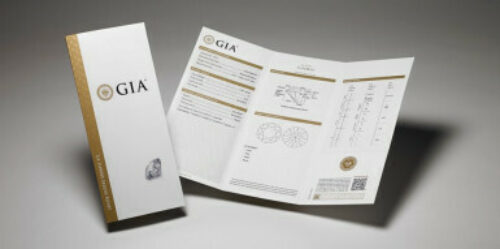Diamonds have always been a sign of prosperity. They still have the image of being expensive and unreachable, a privilege for those with the exorbitant funds for such luxury. Although diamonds are still not a common good, there is more variation in the price of diamonds than it used to be.

How is the price of diamonds determined?
16 Jul 21
For most people, a diamond is a beautiful, bright and crystalline stone. However, diamonds are not mined as wonderful and sparkling stones. They are found in a raw state in mines around the world. An untrained eye might not even recognize a diamond in the rough as a diamond. It takes quite a lot of work (such as grinding and polishing), time and energy (and therefore money) in transforming a rough diamond to the shiny diamond that we all know.
Further, a lot of people are not aware that there exist two kinds of diamonds. We are most familiar with the colourless (or "white") diamond. In addition, there is also the "fancy coloured diamond. These are genuine (not synthetic) diamonds with a natural colour. There are coloured diamonds in literally all the colours of the rainbow. "Fancy coloured" diamonds all originate from a mix of 12 main colours: pink, red, orange, yellow, green, blue, violet, purple, brown, grey, black and white "fancy" (not to be confused with a colourless diamond.
Colourless diamonds are being called colourless, because there is no colour shade in the stone. But why is it worth mentioning, as diamonds, by definition, already have no colour? That's because they in fact do can show colour. A colourless diamond is graded with a letter from D to Z. D is the highest rank and indicates a complete lack of colour. These diamonds are extremely rare and expensive because they are hard to find. (E) and (F) diamonds are on the same level as D. G to J diamonds are referred to as mid-level. The others (K M, N R) and the lowest category (S-Z), already have a presence of yellow or brown.
After all, there is a slight overlap just at the end of the colourless diamond colour scale and at the beginning of the "fancy coloured" diamond colour scale. The more intense the colour, the more expensive the stone will be. Which means that the price of diamonds in the category "fancy coloured" with low colour intensity can be lower than a colourless diamond. This means that investing in a "fancy coloured diamond” is also an option for anyone considering investing in a colourless diamond of decent quality.

Influence of colour intensity
GIA, Gemological Institute of America, is the leading authority for classifying and evaluating gemstones. They developed the well-known 4 C system. For colourless diamonds, the 4 c's are all equally important. For "fancy coloured" diamonds this is different. These are initially judged by their colour (hue, saturation, and intensity) and the rarer the colour, the higher the price of the diamond.
The hue refers to the colour as well as to the purity. Pure and clear tones (without secondary colour) are the most valuable. Finally, there is the saturation, this refers to how dark or light the stone is.
The above factors all have an influence on the price of coloured diamonds. Every week Rapaport publishes an internationally recognized diamond report that contains price guidelines for colourless diamonds. For coloured diamonds such report does not exist because there are too many colour combinations possible. Therefore it is important to consult a reliable partner such as BNT Diamonds who gives advice to investors in a fair and transparent way about the quality and the price of diamonds.

